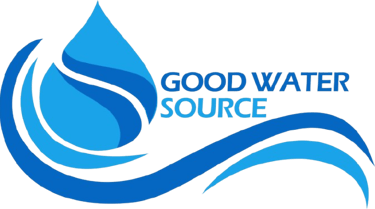
Fleck 5600 12-Day Timer Replacement Water Softener Valve
$275.00
Fleck 5600 control valve with timer based regeneration for replacing or upgrading the current valve on most Water Softener tank systems.
12-Day timer provides a variety of backwashing options to fit your needs and schedule. Standard size mounting base has 2-1/2″ – 8 NPSM threads that fit most standard tanks. Simply unscrew your old head and screw the new one on! Includes transformer for connecting to standard 110v outlet as well as flow controls on the brine and drain lines. Some “bargain” control valves do not include these key components.
Note: Please specify the size of tank being used for proper flow control sizing.
5-Year manufacturers ensures your new valve will function as it should, or it will be repaired or replaced.
Backed by Fleck, you can rest assured there will always be someone there if you ever need them.
Simple installation makes replacing your existing head quick and easy! Available yoke connection is simple and cost effective for homes with a bypass loop in place, and available bypass valve connects right to the system making future service and maintenance as simple as turning a valve. Service Manual – Complete service manual is included with every system and shows basic installation and setup instructions, as well service guidelines and parts schematics. Comprehensive instructions available on our website for detailed installation and setup instructions.
NOTE: This valve DOES NOT include a bypass or yoke connection. If replacing an existing Fleck 5600 or 2510 series valve your existing bypass or yoke can be used. If replacing any other control valve a yoke or bypass will need to be purchased separately. The Fleck 5600 is your basic mechanical control valve. It does it’s job in the most cost effective way possible. The valves used for filter systems operate on a 12-day timer, regenerating at the preset number of days.
Whole House Filtration System
This system comes with the Following.
Fleck 5600 Timer Valve
FITTING 1″ Yoke
Transformers as needed
TANK 10″ x 54″ MINERAL TANK
KDF55
KDF-55 filter media consists of finely granulated copper and zinc alloys. The combination of these two alloys in the media allows the chemical reaction of redox (Oxidation-Reduction) to take place when water passes through the media. Redox involves the transfer of electrons between two molecules, changing these molecules into entirely different elements. In the KDF process, electrons are taken from harmful contaminants like chlorine and microorganisms. This loss of electrons changes contaminants into far less harmful, or even harmless, elements. For example, chlorine– when it loses an electron in a redox reaction–is changed into the harmless, water-soluble chemical chloride. While there are several different KDF media, KDF-55 is designed to specifically remove or reduce chlorine, heavy metals, and microbiological contaminants. When a KDF-55 filter media is used during the first stage of filtration (as is the case with our mixed media filter) the life of the entire filter unit is greatly lengthened. Translation of water contaminants into harmless elements in the first stage reduces the amount of scaling and bacterial growth that will take place on the more expensive carbon filter media of subsequent stages. Also, the preliminary reduction of contaminants allows the adsorptive process of the carbon media to focus on more harmful and elusive contaminants.
1.5 CU FT OF GRANULAR ACTIVATED CARBON:
Carbon is a substance that has a long history of being used to absorb impurities and is perhaps the most powerful absorbent known to man. One pound of carbon contains a surface area of roughly 125 acres and can absorb literally thousands of different chemicals. Activated carbon which has a slight electro-positive charge added to it, making it even more attractive to chemicals and impurities. As the water passes over the positively charged carbon surface, the negative ions of the of the contaminants are drawn to the surface of the carbon granules. Activated carbon filters used for home water treatment typically contain either granular activated carbon or powdered block carbon. Although both are effective, carbon block filters generally have a higher contaminant removal ratio. The two most important factors affecting the efficiency of activated carbon filtration are the amount of carbon in the unit and the amount of time the contaminant spends in contact with it. the more carbon the better. Similarly, the lower the flow rate of the water, the more time contaminants will be in contact with the carbon, and the more absorption that will take place. Particle size also affects removal rates. The most common carbon types used in water filtration are bituminous, wood, and coconut shell carbons. While coconut shell carbon typically costs 20% more than the others, it is generally regarded as the most effective of the three. All of our activated carbon filters use coconut shell carbon. There are two principal mechanisms by which activated carbon removes contaminants from water; absorption, and catalytic reduction, a process involving the attraction of negatively-charged contaminants ions to the positively-charged activated carbon. Organic compounds are removed by absorption and residual disinfectants such as chlorine and chloramines are removed by catalytic reduction. Activated carbon filtration is very common in a number of home water treatment systems. It can be used as a stand alone filter to reduce or eliminate bad tastes and odors, chlorine, and many organic contaminants in municipal (pre-treated or chlorinated) water supplies to produce a significantly improved drinking water. It is also very commonly used as a pre-treatment as part of a reverse osmosis system to reduce many organic contaminants, chlorine, and other items that could foul the reverse osmosis membrane. 0.5 block filters are commonly used to remove systs such as giardia and crytosporidium. Activated carbon filters remove/reduce many volatile organic chemicals (VOC), pesticides and herbicides, as well as chlorine, benzene, trihalomethane (THM) compounds, radon, solvents and hundreds of other man-made chemicals found in tap water.





